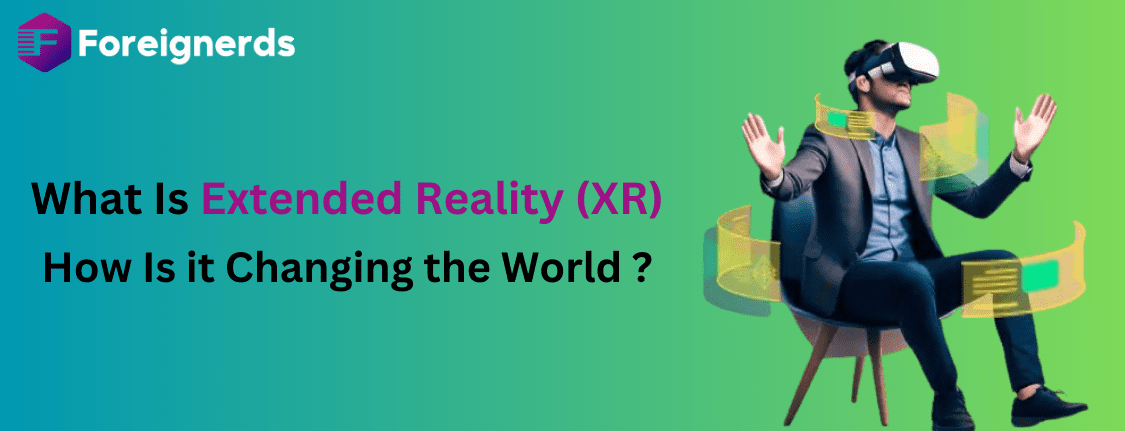Extended Reality (XR) is a fascinating realm where the digital and physical worlds converge, offering immersive experiences beyond our wildest imagination. It encompasses a spectrum of technologies, including Virtual Reality (VR), Augmented Reality (AR), and Mixed Reality (MR). In this article, we delve into the various dimensions of
XR, exploring its types, evolution, advantages, applications across industries, challenges, development tools, and the exciting future it promises.
Types of XR
Virtual Reality (VR)
VR plunges users into a completely simulated environment, shutting out the physical world. From gaming to virtual tourism, VR is reshaping how we perceive and interact with information.
Augmented Reality (AR)
AR overlays digital content onto the real world, enhancing our surroundings. Popularized by apps like Pokemon Go, AR has applications in fields ranging from education to retail.
Mixed Reality (MR)
MR merges elements of both VR and AR, allowing digital and physical entities to coexist and interact. This dynamic technology has promising applications in various industries.
The Evolution of XR Technology
XR’s journey traces back to humble beginnings, with roots in early VR experiments. As technology advanced, XR evolved, reaching milestones like the development of AR applications and sophisticated VR systems.
Advantages of XR Technology
Improved Product Design and Development
XR facilitates virtual prototyping and design iterations, expediting product development cycles and enhancing final outcomes.
Enhanced Learning and Training
In the educational landscape, XR provides immersive learning experiences, from historical recreations to complex medical simulations.
Improved Workforce Efficiency
XR transforms how businesses operate, streamlining workflows, and boosting productivity through hands-free interfaces and virtual collaboration.
Revolutionizing Healthcare
In the healthcare sector, XR is making waves with applications like surgical simulations, medical training, and patient care enhancement.
Increased Customer and Employee Engagement
XR captivates audiences in marketing and employee training, offering engaging and interactive experiences that leave a lasting impact.
Potential Applications of XR in Different Industries
From entertainment and education to healthcare and retail, the potential applications of XR are vast. Imagine virtually trying on clothes before purchasing or touring a property from the comfort of your home.
How XR is Changing the World
XR in Entertainment and Gaming
Gaming experiences have transcended traditional boundaries, immersing players in fantastical worlds through VR headsets and AR-enhanced games.
XR in Education and Training
Educators leverage XR to create dynamic and interactive lessons, transporting students to historical events or microscopic realms.
XR in Healthcare
Surgeons practice complex procedures in virtual environments, and patients undergo therapy through XR applications, marking a paradigm shift in healthcare.
XR in Retail and E-commerce
Virtual showrooms and AR try-on experiences redefine the retail landscape, offering a personalized and futuristic shopping journey.
XR in Real Estate and Architecture
Buyers explore homes and architects visualize designs through XR, revolutionizing the way properties are showcased and designed.
XR in Tourism and Hospitality
Virtual travel experiences allow users to explore destinations before booking, while hotels use XR for virtual concierge services.
XR in Sports and Fitness
From virtual fitness classes to immersive sports broadcasts, XR is transforming how we engage with sports and fitness activities.
Challenges Facing XR Adoption
Despite its potential, XR faces challenges such as the high cost of devices, concerns about privacy, and the need for widespread infrastructure development. Navigating these challenges is crucial for the seamless integration of XR into everyday life.
XR Development Tools and Platforms
Several tools and platforms are instrumental in XR development. Coursera’s XR Development Course and Microsoft’s Mixed Reality Toolkit are valuable resources, empowering developers to create innovative XR experiences.
Future of XR Technology
The future of XR holds exciting possibilities. As technology advances, we anticipate more seamless integration into daily life, with XR becoming a staple in various industries, pushing the boundaries of what’s possible.
Conclusion
In conclusion,
Extended Reality is not just a technological marvel but a transformative force reshaping how we perceive and interact with the world. From entertainment to education, healthcare to retail, XR is leaving an indelible mark on every facet of our lives.
